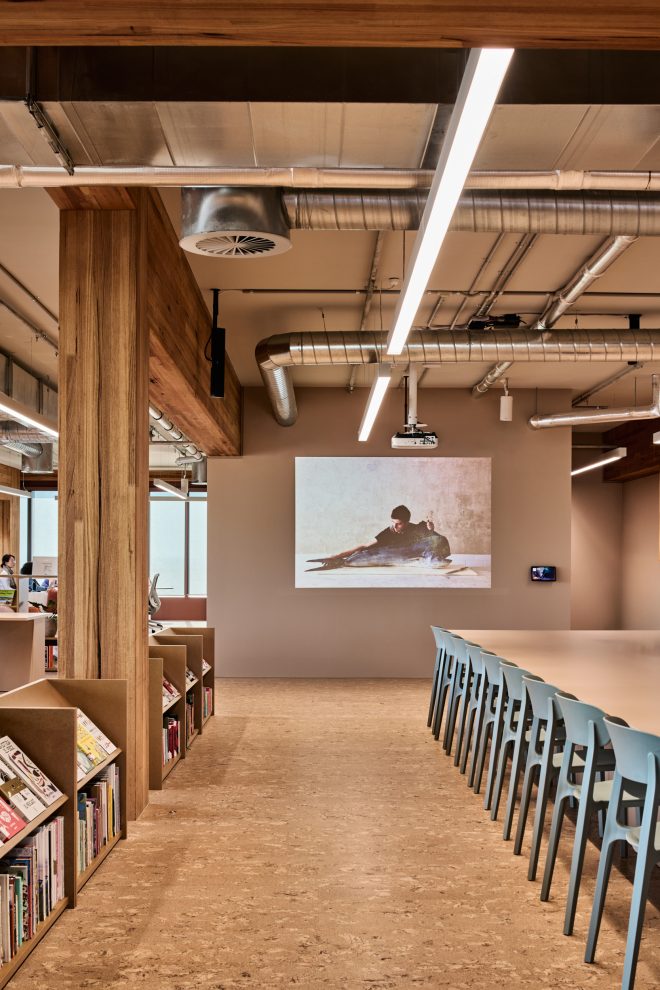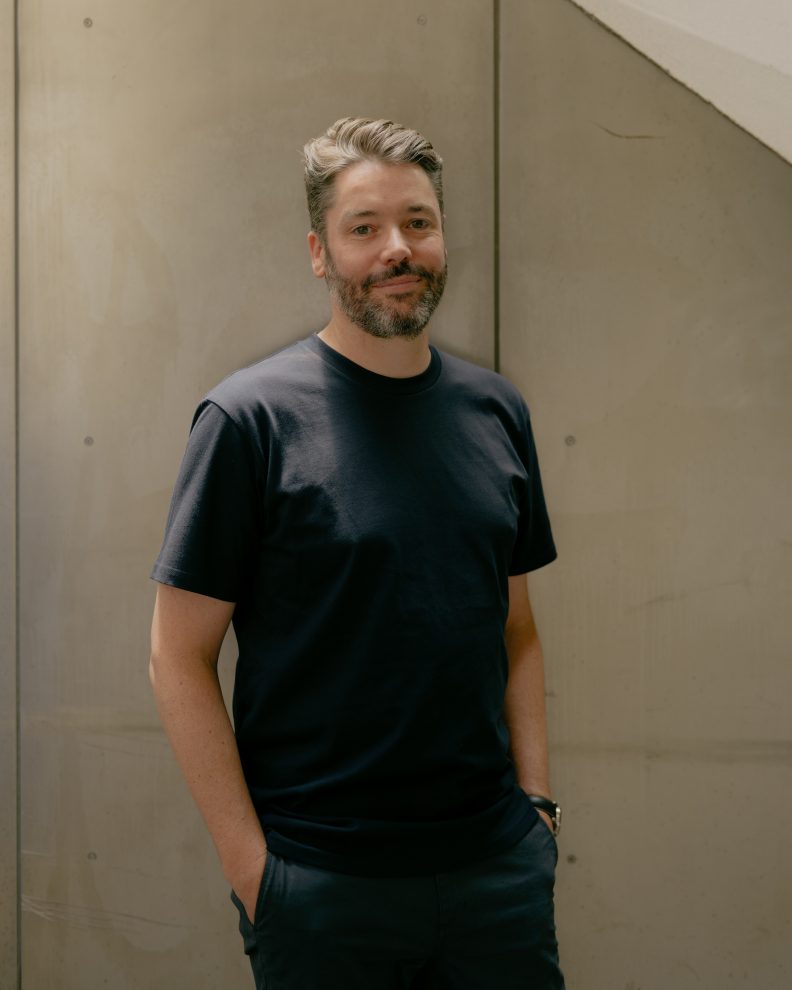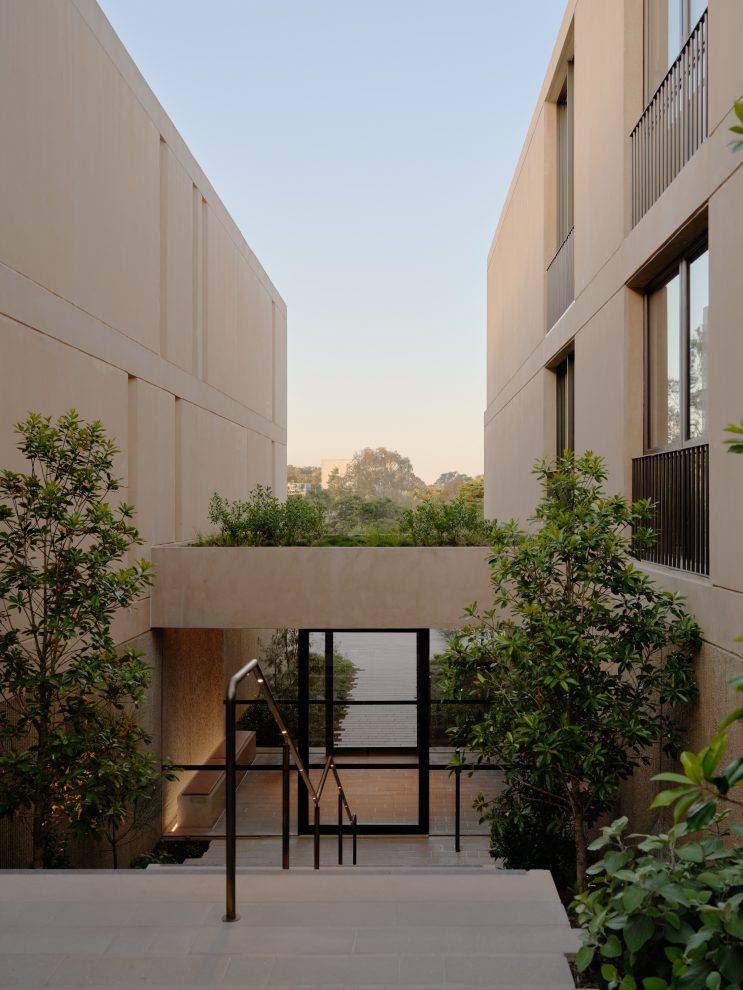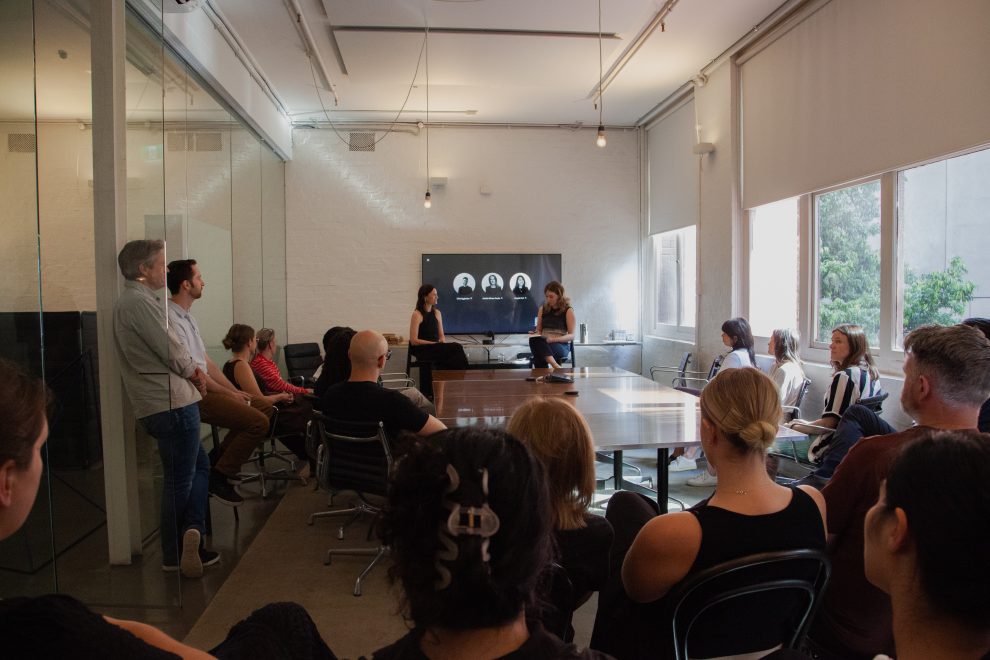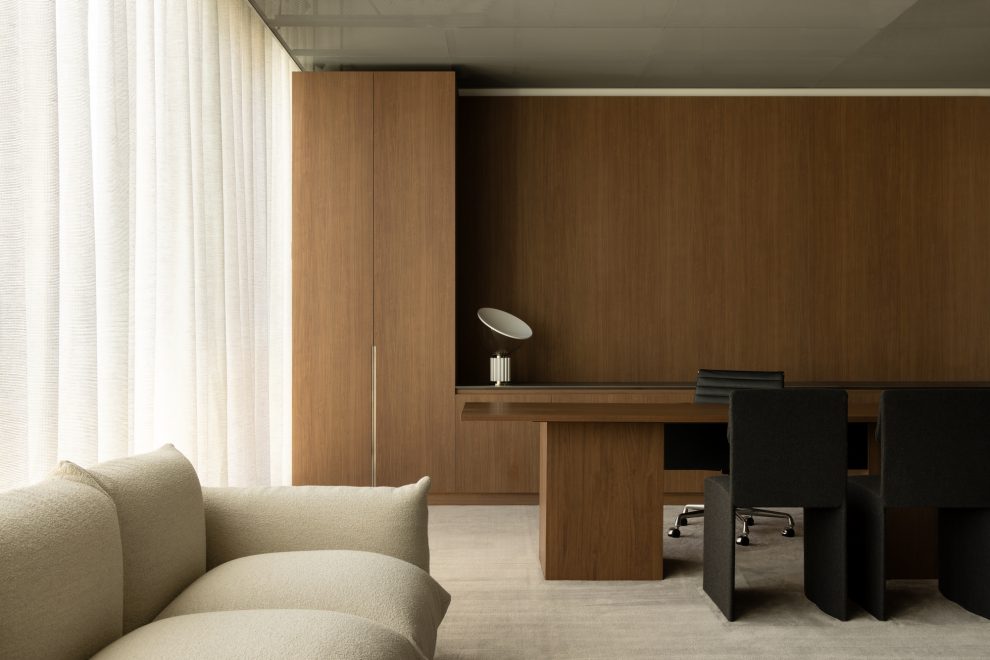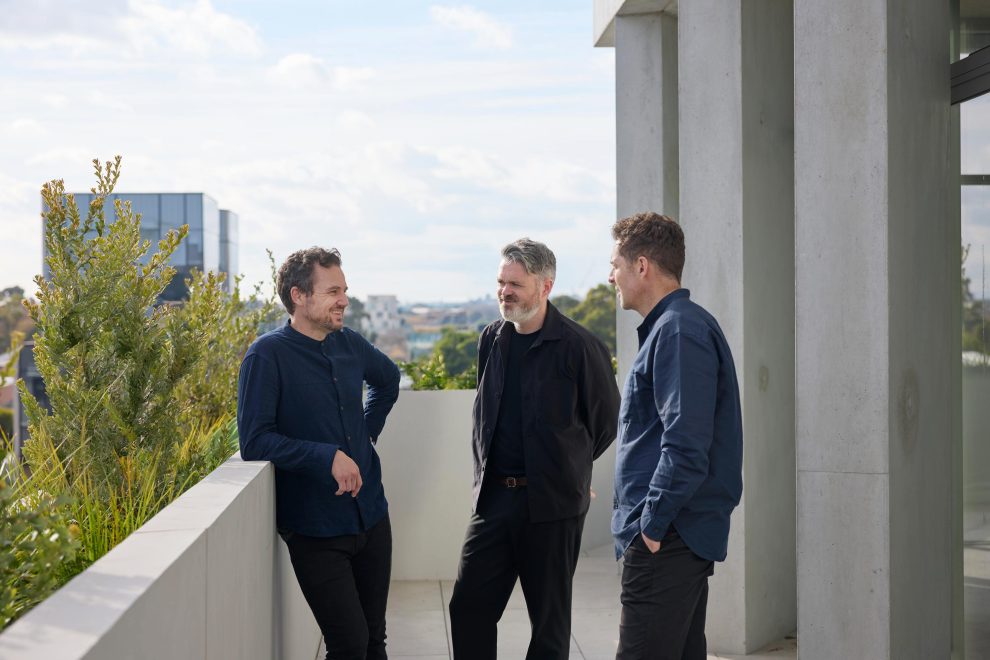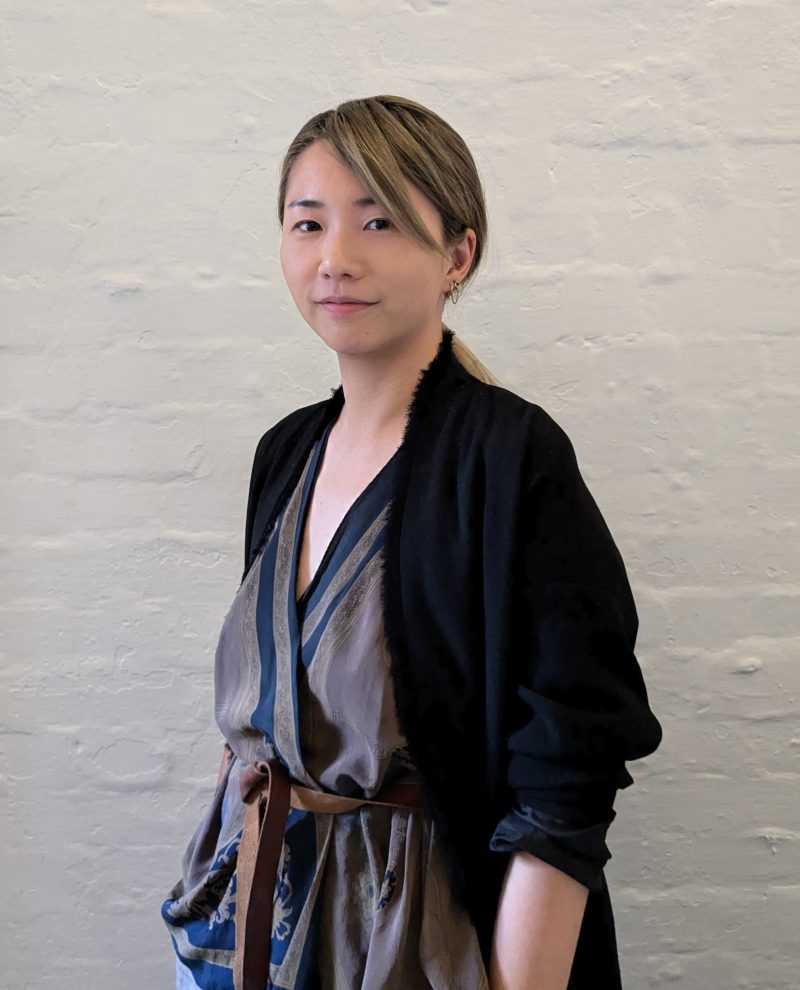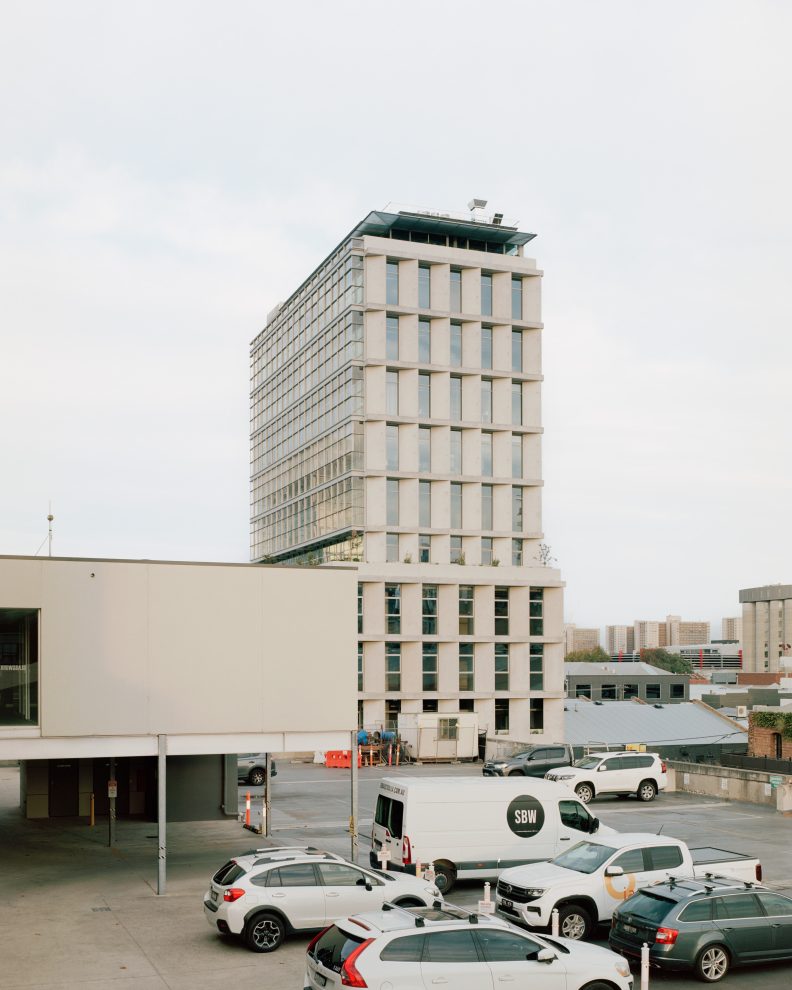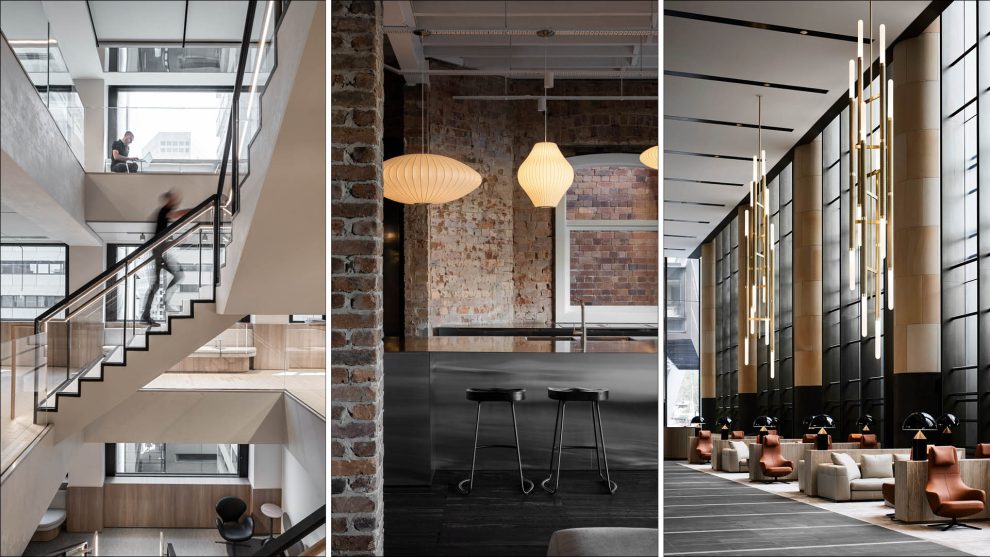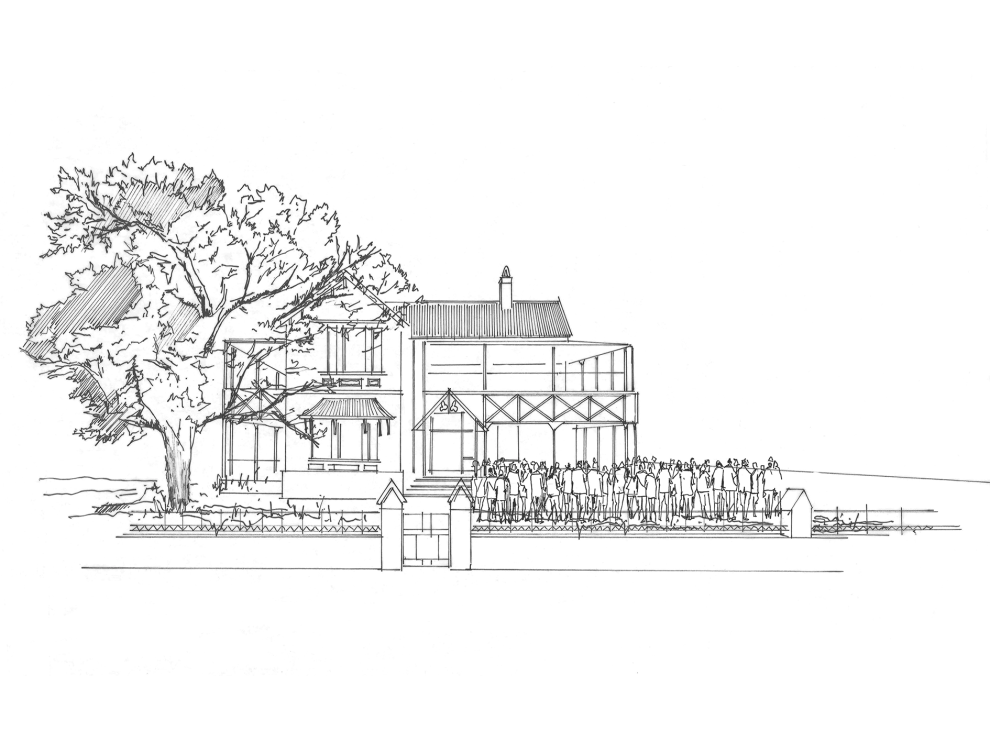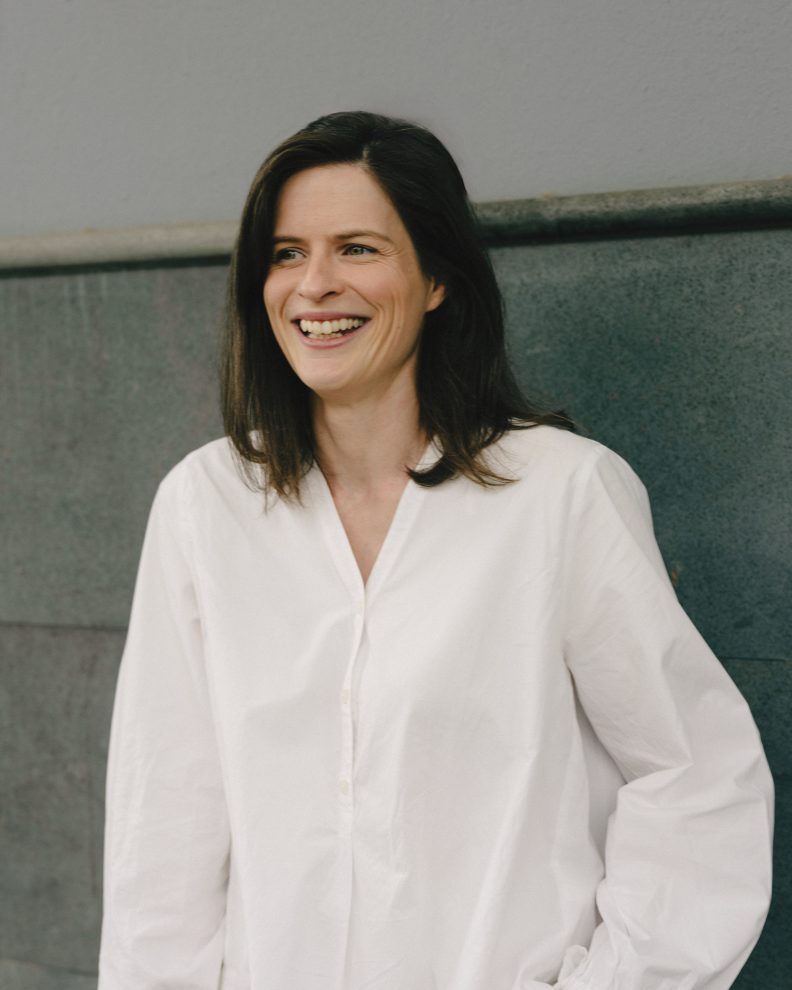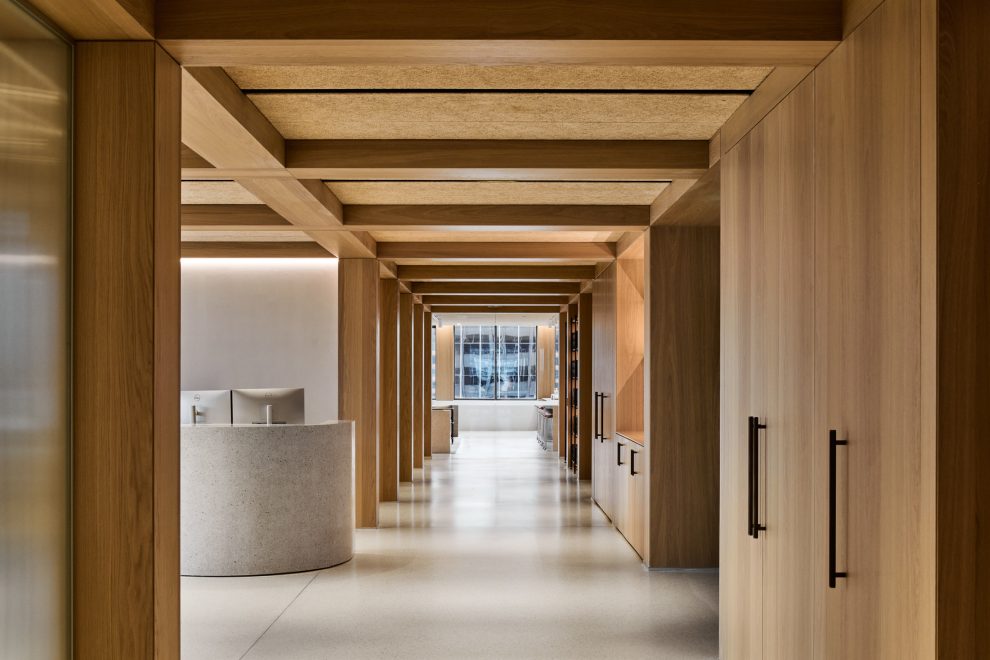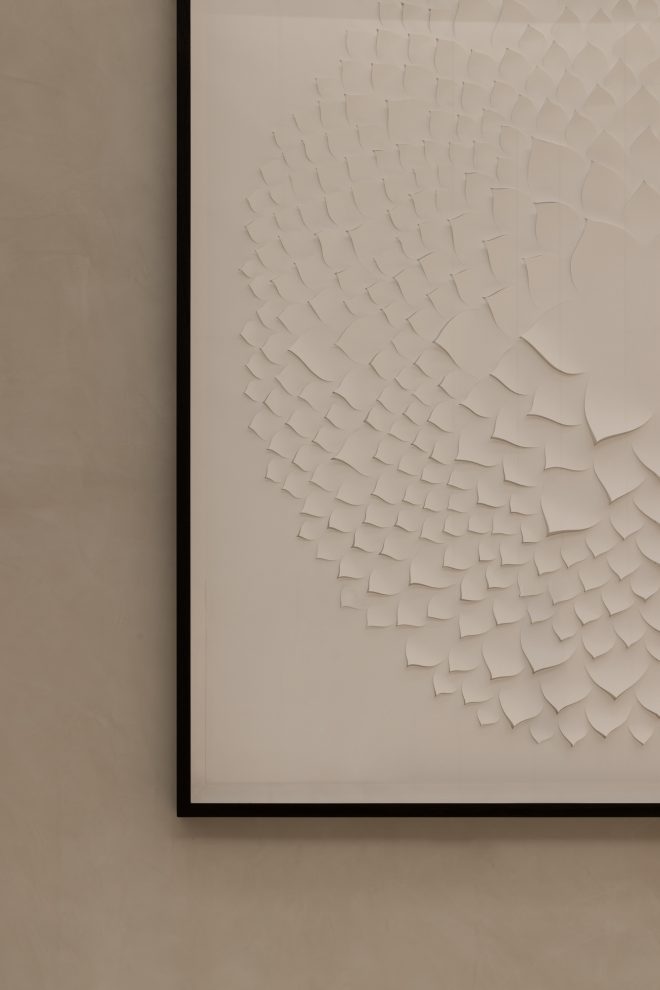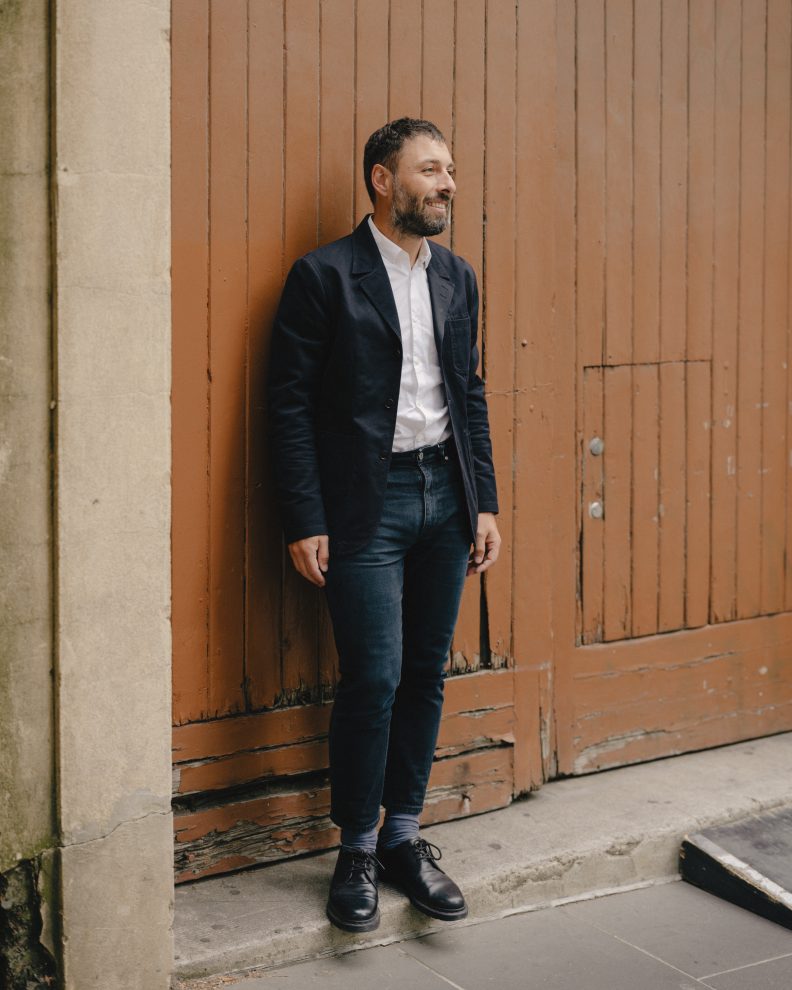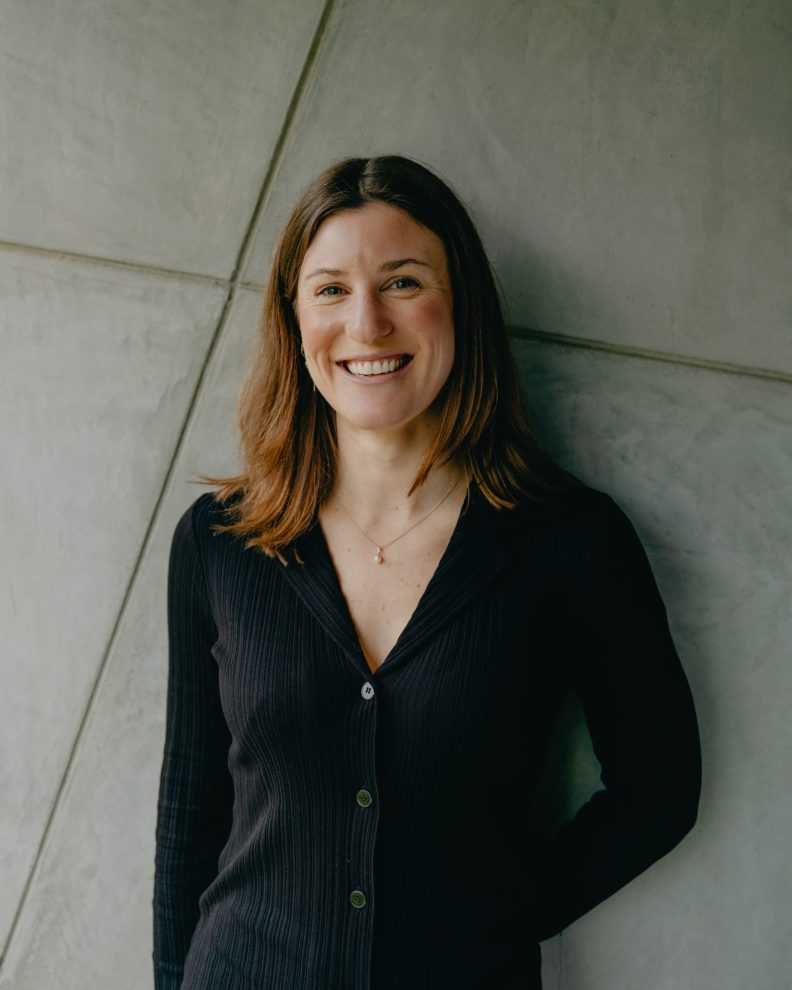
Striking the judges with her impressive portfolio and steadfast commitment to her creative practice, RMIT student Rouyi ShaoTian chats about her drivers and perspectives within interior design.
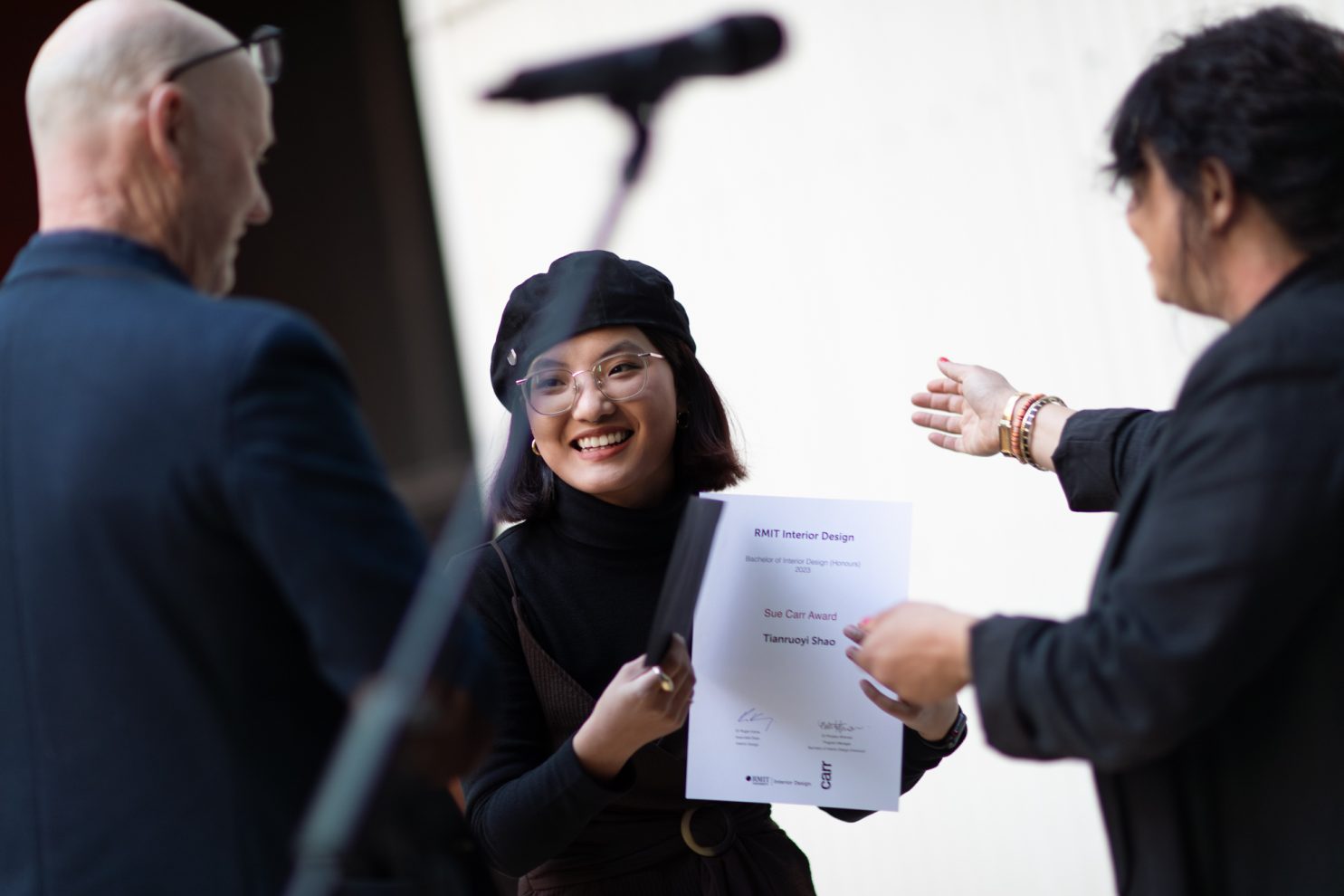
In December last year, third-year RMIT Interior Design student Rouyi ShaoTian was announced as the 2023 RMIT Sue Carr Award winner. The award, judged by a panel of Carr designers, recognises entrants that display excellence in design and communication and capture the studio’s ethos of enduring and curated design. With an adept ability to convey a proposal, Rouyi’s maturity and sincere passion for design – technical and conceptual – was evident through her portfolio and articulation of thought. Today, we learn more about Rouyi’s academic journey and what’s next.
How did you discover your love for design?
When I was a child, I was interested in art and more easily attracted by form rather than content. I entered university with a vague love of design, and it wasn’t until the pandemic hit that I properly interrogated my living spaces, discovering many issues and potential solutions. This was a starting point of design for me. I was more willing to be actively involved rather than just staying on the stage of being an audience.
What made you want to study interior design specifically?
The opportunity to study interior design was related to my love of watching movies. The design of the scenes sparked a strong curiosity about the interplay of materials, light and shadows, temperature, scale and colour, which are all involved in interior design. The occurrences of the story are related to the space the characters inhabit, so the space is part of the overall logic. I chose to study interior design because I want to create spaces that bring particular feelings to people and encourage stories within the design. It serves as the medium between people and architecture.
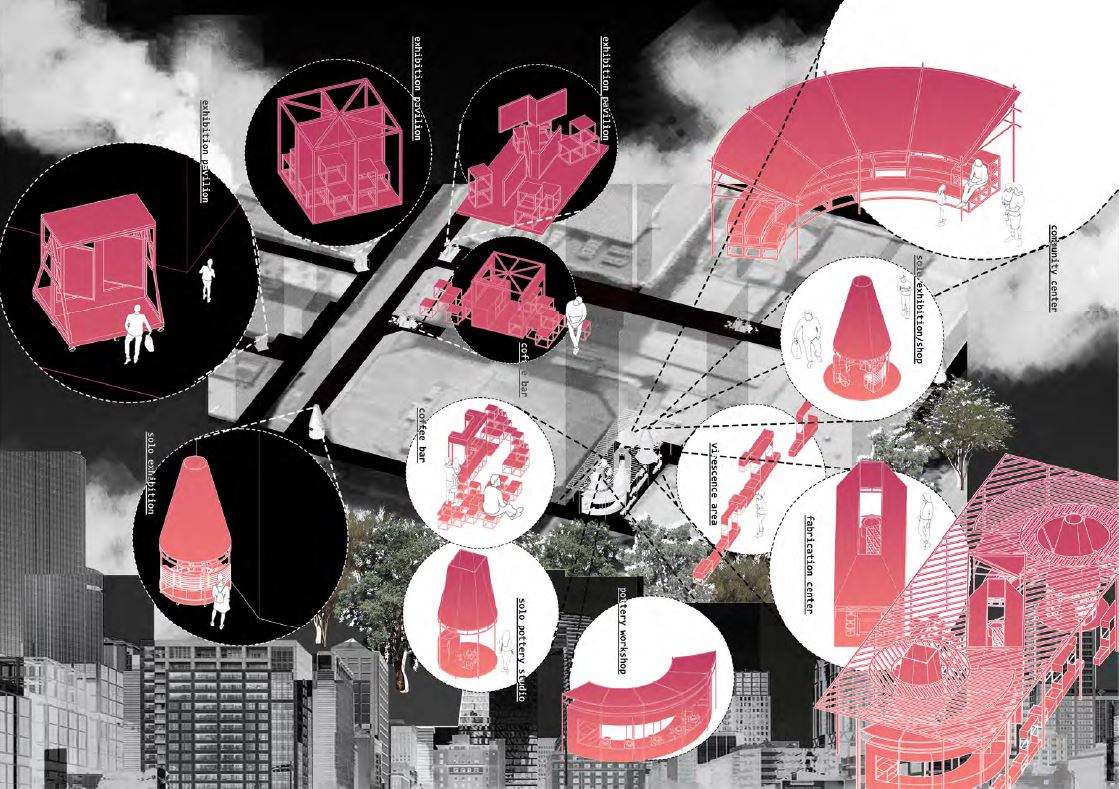
You’re currently in your fourth and final year of study. How’s the academic journey been so far?
I was surprised I even got into university to study interior design! I was feeling quite lost at the time but now it’s completely different. Although the future is unpredictable, at least I understand myself better than before and know my strengths and challenges. This growth is a totally new but exciting experience!
What encouraged you to apply for the Sue Carr Award, and how did it feel to win?
I received encouragement from my teachers and family, which at the time was crucial for my confidence. I was feeling unstable and facing some difficulties in my studies, so I hesitated to apply. My RMIT program manager RMIT Dr Phoebe Whitman and my mother never doubted my abilities and inspired me to apply and put forward my best effort.
Winning the award completely exceeded my expectations. This is the first time I’ve received recognition from an external entity, which is especially exciting. You can tell from the photos at the awards that I was struggling to process the news! But after winning the award, I became more aware that everything is just assumptions before you try. Winning gave me a lot of confidence and ambition. I want to do better, learn new knowledge, and challenge myself in every possible way.
You’re also a talented photographer. How does your interest in interior design and photography come together?
It comes back again to my love of movies as I discovered that every subtle emotion can be expressed through the lens. Later when I studied interior design, social media and magazines became my source of information and I became fascinated by the project photos. Sometimes, I find it difficult to understand the concept of the design completely with just text. But photography intuitively allows me to experience design language, emotions, perspectives, and details.
In my second year, I took a photography class, which introduced me to manual cameras and the relationship between space and photography. What I learned was that photography can showcase not only time and perspective but also culture as well. There’s already a diverse range of content behind the lens, and that sparks questions about what type of atmosphere I would like to capture.
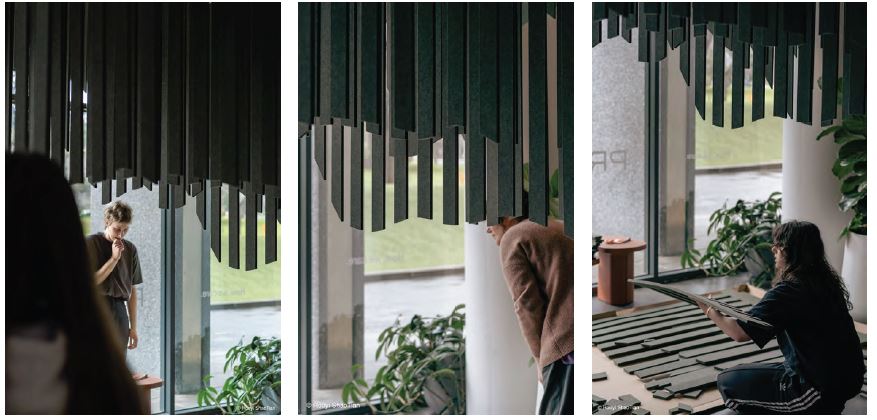

How does the work of Carr resonate with you?
The work of Carr always interrogates needs with emotions. All designs revolve around the characteristics of the land and the needs of users. So, at the same time, Carr considers the atmosphere and experience that the overall design should convey. A professional and meticulously crafted design team should demonstrate the transition from the past, present, and future, and Carr’s work meets this standard.
Can you share more details about your winning portfolio? What are the projects you’d like to highlight?
There are several projects I want to focus on. The first one is Review Ronchamp, which is about a site renewal and narrative spaces. This was the first project with a relatively high level of complexity and application of common design programs. The second project is N3. The task was to find ways to accommodate creative productions in the Turning Circle precinct of Melbourne’s CBD. I proposed a distributed grade of creative studio space to support infrastructure across the precinct. The last one, Framing Conversations, was a group exercise to utilise materials from Autex Acoustic and build a sensory experience and installation for its showroom. I learned a lot from this project, especially the importance of teamwork.
As an emerging designer who is about to embark on their career, what do you hope to see for the future of the design industry in Australia?
I hope to see different design typologies and cultures interrogated into design. I believe Australia’s design industry has the potential to become an excellent and broad platform. Given Australia’s cultural background, the design industry should be highly inclusive. There should be more opportunities for exchange, between cultures, disciplines, and more.
What do you hope to achieve during your placement at Carr?
I hope to learn professional design standards. As a student, I often tend to subjectively consider design and client needs and feelings. While at Carr, I want to learn with a professional and mature design team to turn inspiration into reality at every step. I aim to seamlessly examine and standardise the design process with all the knowledge available within the studio.
The RMIT Sue Carr Award is an annual award offered to students, with winners receiving $5000 in prize money and a paid internship at Carr to support their studies in their final year.
